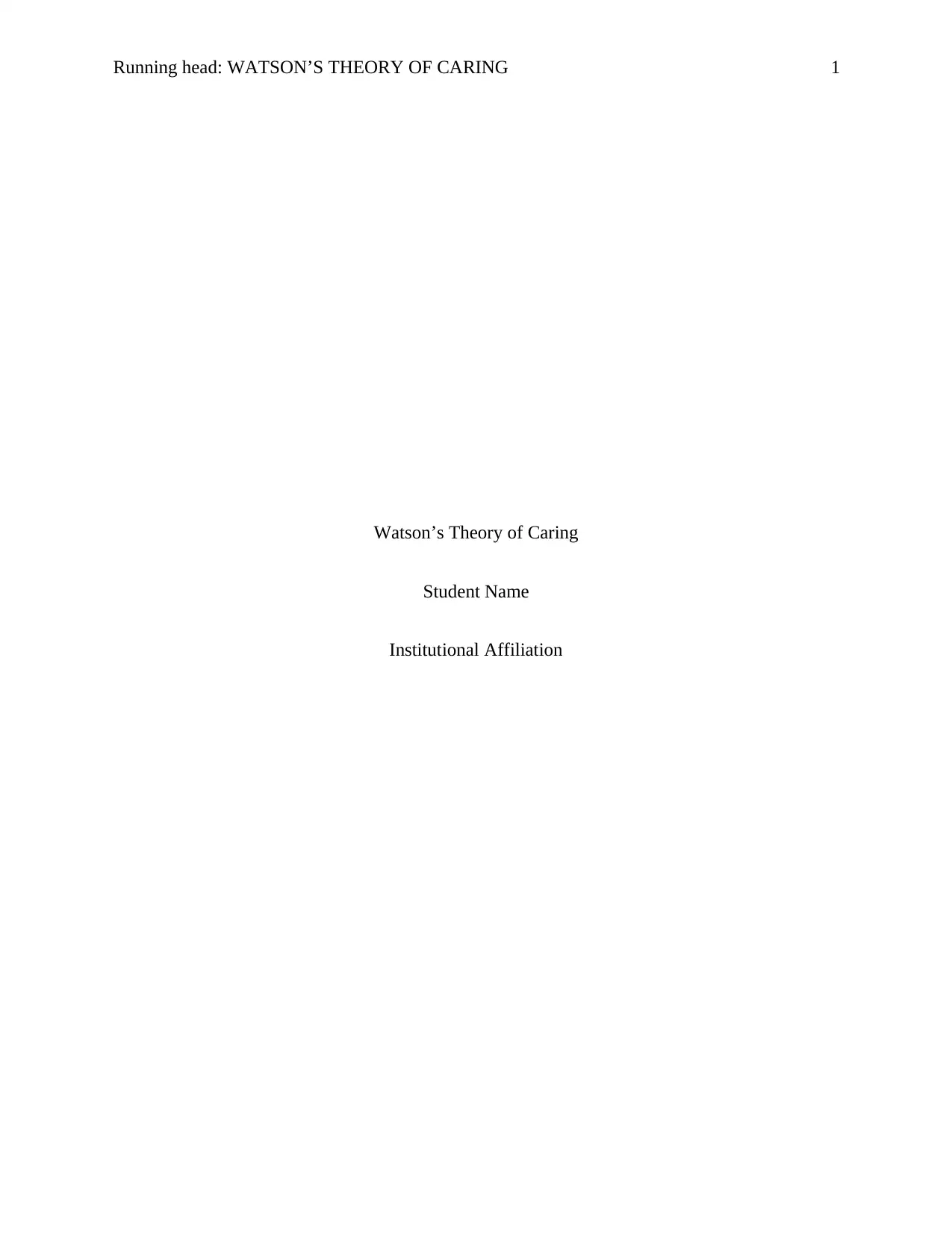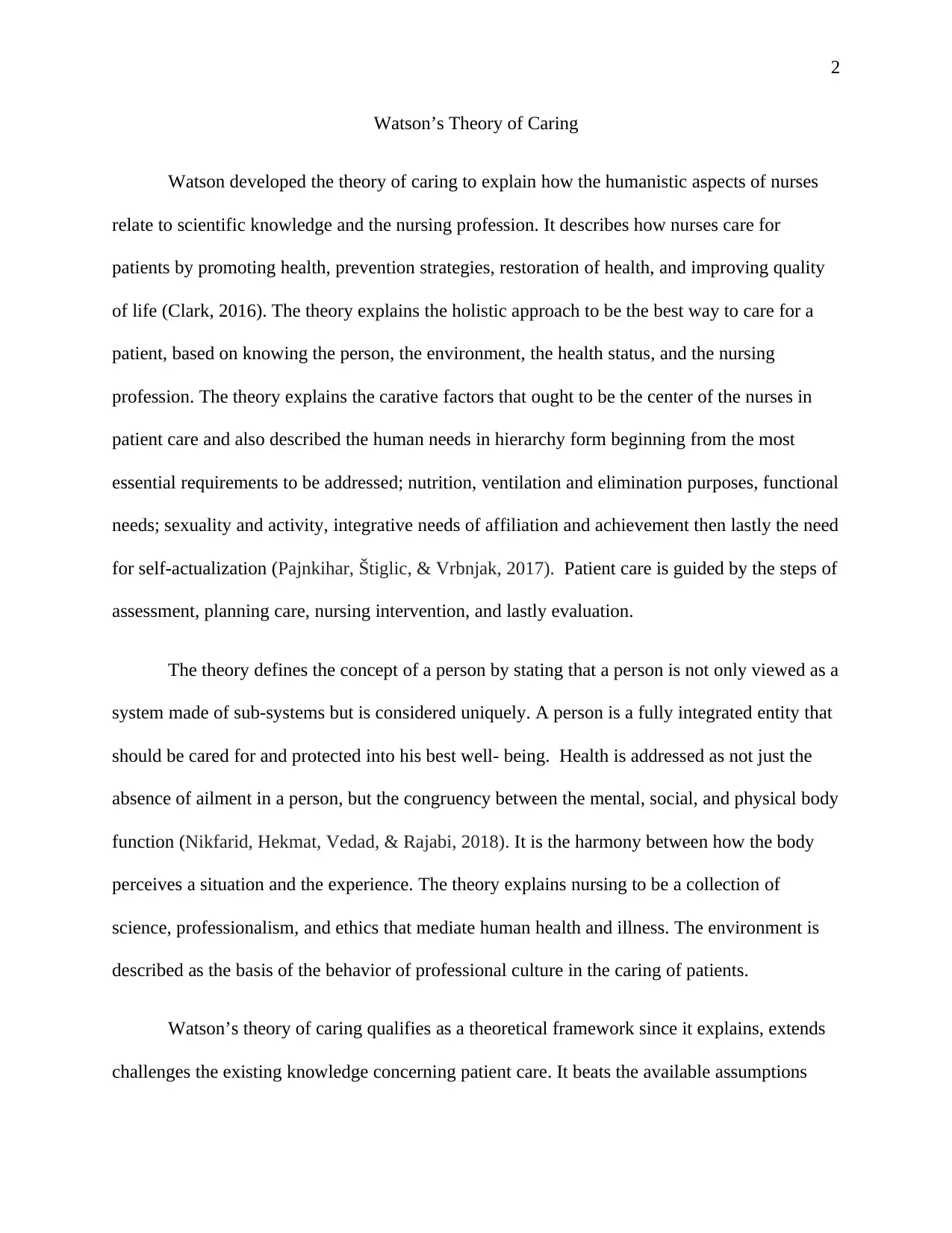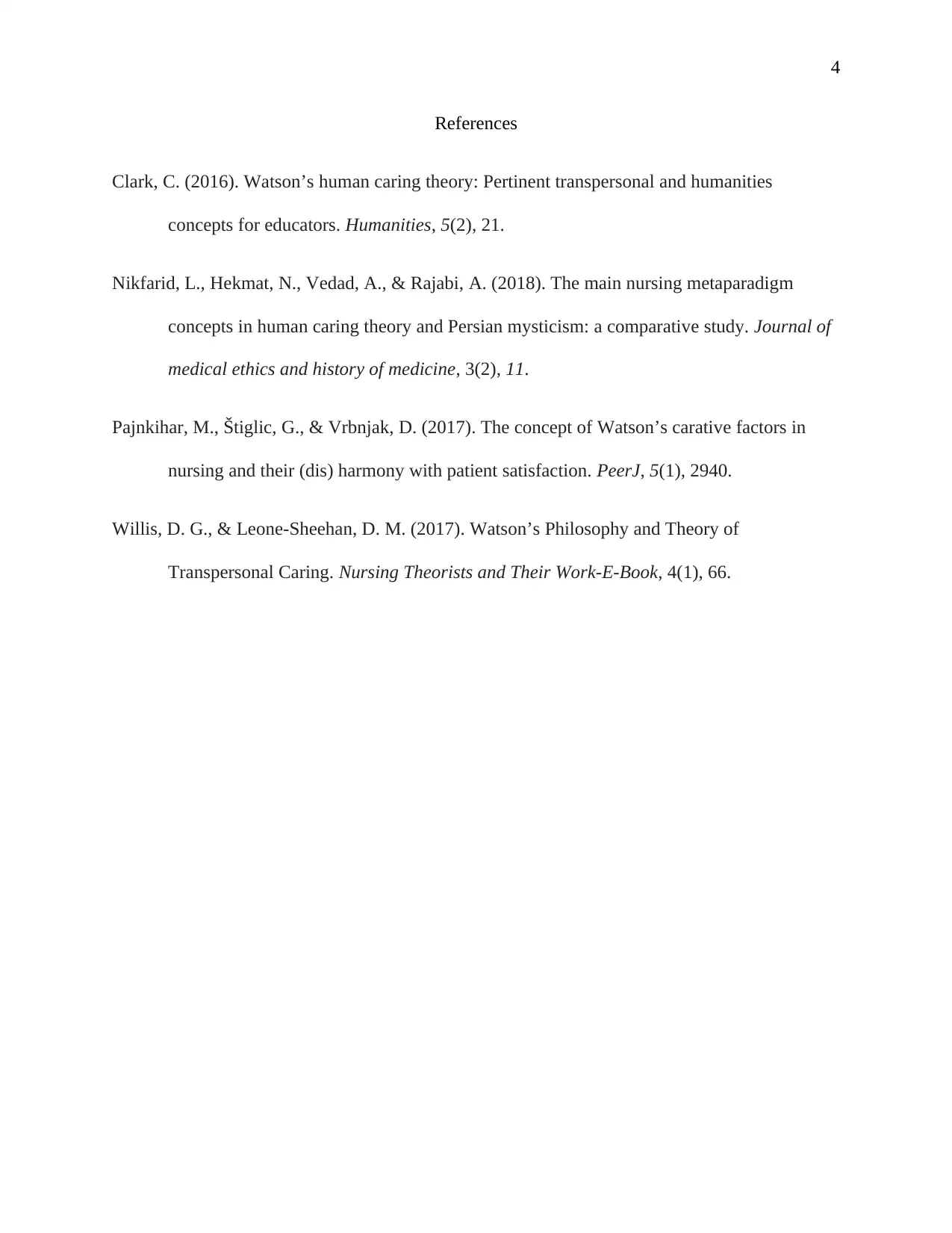Watson's Theory of Caring: Implications for Nursing Practice Report
VerifiedAdded on 2022/10/04
|4
|798
|276
Report
AI Summary
This report delves into Jean Watson's Theory of Caring, elucidating its core tenets and application within the nursing profession. The theory emphasizes the integration of humanistic aspects with scientific knowledge to guide nursing practice, focusing on promoting health, preventing illness, restoring health, and enhancing the quality of life for patients. It underscores a holistic approach to patient care, considering the individual's unique characteristics, environment, health status, and the role of the nurse. The report outlines Watson's carative factors, which are central to patient care, and the hierarchy of human needs, from basic physiological requirements to self-actualization. It describes the nursing process as a structured approach, including assessment, planning, intervention, and evaluation. The theory defines the person as a unique, integrated being and health as the congruence between mental, social, and physical functions. Nursing is portrayed as a blend of science, professionalism, and ethics that addresses human health and illness, with the environment shaping professional behavior. The report concludes with a discussion of the theory's practical application, particularly in guiding nursing interventions and prioritizing patient needs to improve health outcomes. The student indicates they will use the theory as a foundation for their future practice as a nurse practitioner, using it to inform care plans and interventions.
1 out of 4











![[object Object]](/_next/static/media/star-bottom.7253800d.svg)